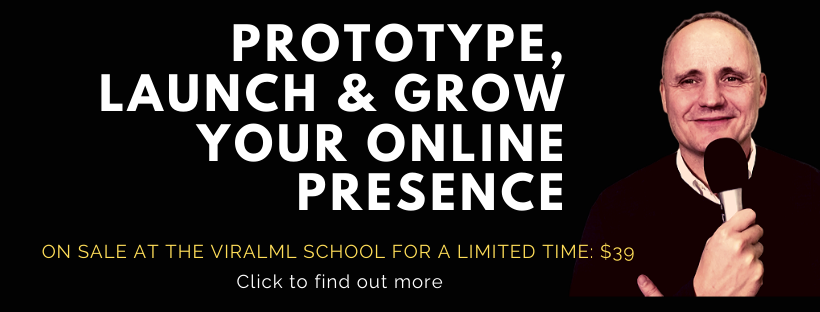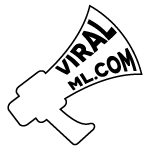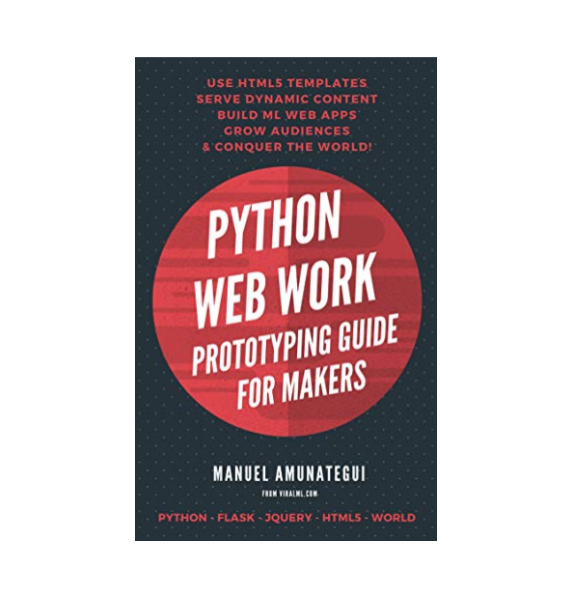
Search Engine Optimization (SEO) Basics - Starting a Business? Part 6
Introduction
Let's go through the laundry list and we're simply going to start from the top and work our way down. SEO isn't the sexiest or most riveting of sciences yet it is critical for the visibility and discoverability of your material.
Code
from IPython.display import Image
Image(filename='viralml-book.png')
Starting a Business? Part 6
Search Engine Optimization (SEO) Basics
Part 6 uses a different format than the others from the 'Starting a New Business' series. It is more of a laundry list and we're simply going to start from the top and work our way down. SEO isn't the sexiest or most riveting of sciences yet it is critical for the visibility and discoverability of your material.
The biggest downside of working SEO is that the effects of your changes are not measured in days or weeks but months, even years. It's one of those things you'll have to take everybody's word for it and implement at the very minimum the list shown below - trust me, there's plenty more you can do and hundreds of books you can buy on the topic. I'm no expert but I consistently follow the below list and I highly recommend you do the same.
Recap:
Part 1: Building a Flask page using HTML5UP and PythonAnwyere:
http://www.viralml.com/video-content.html?fm=tw&v=2619gy14XXA
Part 2: Adding a 'Contac Us' email form using SendGrid:
http://www.viralml.com/video-content.html?fm=tw&v=2_CoRVTCpzo
Part 3: Create a Pixel Tracker To Learn More About Our Visitors:
http://www.viralml.com/video-content.html?fm=tw&v=4isPmVUymzc
Part 4: Dynamic Charting with Flask, Matplotlib, Chart.JS:
https://www.viralml.com/video-content.html?fm=yt&v=Z-um0QoVy18
Part 5: Simple Credit Card Processing with Stripe Checkout:
https://www.viralml.com/video-content.html?v=u0HVSj8H8LM
Part 6: Search Engine Optimization (SEO) Basics
https://www.viralml.com/video-content.html?fm=yt&v=5_ySk_Exebk
Image(filename='newbusiness.jpg', width=600)
SEO Laundry List
Obvious stuff… for ogranic growth these five are key!
- Nothing trumps good content!
- Catchy, clear and to the point title (with good keywords)!
- Build an audience, publish to that audience, etc.
- Save your HTML page with a readable name that relates to the content
- From the many content studies - 2000 words is a good spot
- Design for mobile first, make your site responsive (HTML5UP handles all mediums)!
HTML Technical stuff
Title Tag The title tag is critical as it can be used by search engines in their results pages.
<TITLE>...</TITLE>
Fill those META tags!
Here I show general and Twitter-specific META tags, if you work with other platforms like Instagram or others, research their specific tags as it is critical for that platform. For example, I can drop my blog posts into Twitter using just the link and it will automatically pull the title, description, image, etc.
General
<META name="author" content="Manuel Amunategui" />
<META name="description" content="" />
Open Graph Protocol (FB for example)
<META property="og:title" content="" />
<META property="og:type" content="article" />
<META property="og:image" content="" />
<META property="og:url" content="" />
<META property="og:description" content="" />
Twitter-specific
<META name="twitter:card" content="summary_large_image">
<META name="twitter:site" content="">
<META name="twitter:title" content="">
<META name="twitter:url" content="" />
<META name="twitter:image" content="" />
<META name="twitter:description" content="" />
SSL - HTTPS
Easy to do on PythonAnywhere. Go to the 'Web' tab and find the 'Security' option and select both 'HTTPS certificate' and 'Force HTTPS'
Image(filename='https-pythonanywhere.png', width=600)
H1 Tag
<H1>… </H1>
You should only have one H1 tag on your page and it should be very close to your TITLE tag if not the same.
H2 Tag
<H2>… </H2>
You can have more than one H2 tag but use it as a sub-title or content delineator. This will help the search engine understand the different categories in your content.
Image
One more tip, from Jason McDonald, author of SEO Fitness Workbook. Jason emphasizes the importance that every piece should have an image appropriately named, with a sensible "title" and "alt" tag. This is an interesting tip because we often don't bother naming the image in a readable way or we don't bother with the alt or title tags (at least I didn't). These could be seen by the indexing engine as bad content or even spam.
Here is an example of one of my HTML IMG tags (notice the name, "alt" and "title" tag values):
<img src="static/images/keep-the-talk3.png" width='350px' alt="Keep The Talk Going!">Additional Help
Last step is to drop your updated URL into the Google Search Console so it can be indexed ASAP! You can do this one by one using the Google Search Console tool and the Bing Webmaster tool or you can use XML site maps. Also, YouTube is considered the #2 search engine, make YT content and point to your site.
Google Search Console
Image(filename='google-search-console.png', width=600)
Webmaster Tools - Bing
Image(filename='bing-webmaster-tools.png', width=600)
Create site maps of your site using tools like
<?xml version="1.0" encoding="UTF-8"?>
<urlset
xmlns="http://www.sitemaps.org/schemas/sitemap/0.9"
xmlns:xsi="http://www.w3.org/2001/XMLSchema-instance"
xsi:schemaLocation="http://www.sitemaps.org/schemas/sitemap/0.9
http://www.sitemaps.org/schemas/sitemap/0.9/sitemap.xsd">
<!-- created with Free Online Sitemap Generator www.xml-sitemaps.com -->
<url>
<loc>https://www.keepthetalk.com/</loc>
<lastmod>2019-09-16T08:46:37+00:00</lastmod>
<priority>1.00</priority>
</url>
<url>
<loc>https://www.keepthetalk.com/index.html</loc>
<lastmod>2019-09-16T08:46:37+00:00</lastmod>
<priority>0.80</priority>
</url>
<url>
<loc>https://www.keepthetalk.com/blog.html</loc>
<lastmod>2019-09-16T08:46:37+00:00</lastmod>
<priority>0.80</priority>
</url>
<url>
<loc>https://www.keepthetalk.com/blog-content.html?l=All-Come-to-Look-for-Twitter.html</loc>
<lastmod>2019-09-16T08:46:37+00:00</lastmod>
<priority>0.64</priority>
</url>
<url>
<loc>https://www.keepthetalk.com/blog-content.html?l=Its-All-About-the-Story-Even-On-Twitter.html</loc>
<lastmod>2019-09-16T08:46:37+00:00</lastmod>
<priority>0.64</priority>
</url>
...That's it for SEO stuff! There are 100s of books on this topic if you want to dig further.
Show Notes
(pardon typos and formatting -these are the notes I use to make the videos)
Let's go through the laundry list and we're simply going to start from the top and work our way down. SEO isn't the sexiest or most riveting of sciences yet it is critical for the visibility and discoverability of your material.



